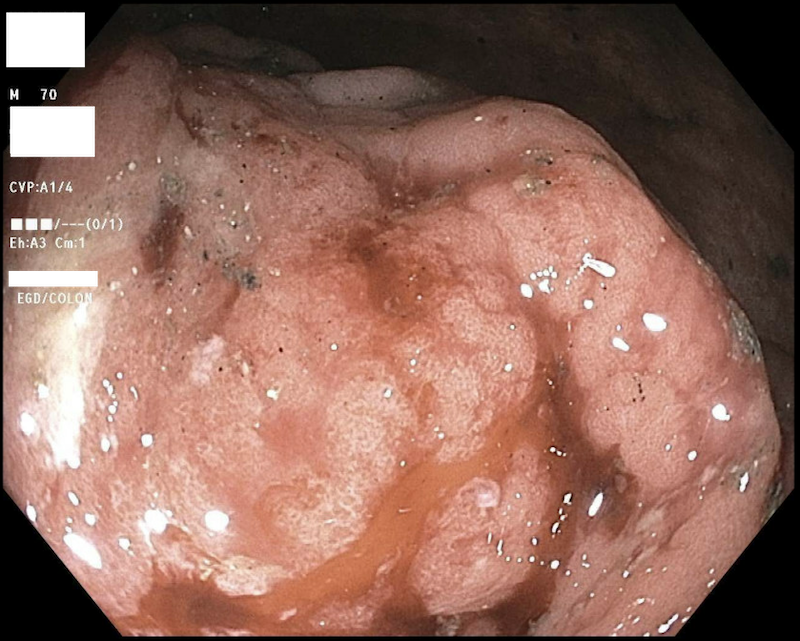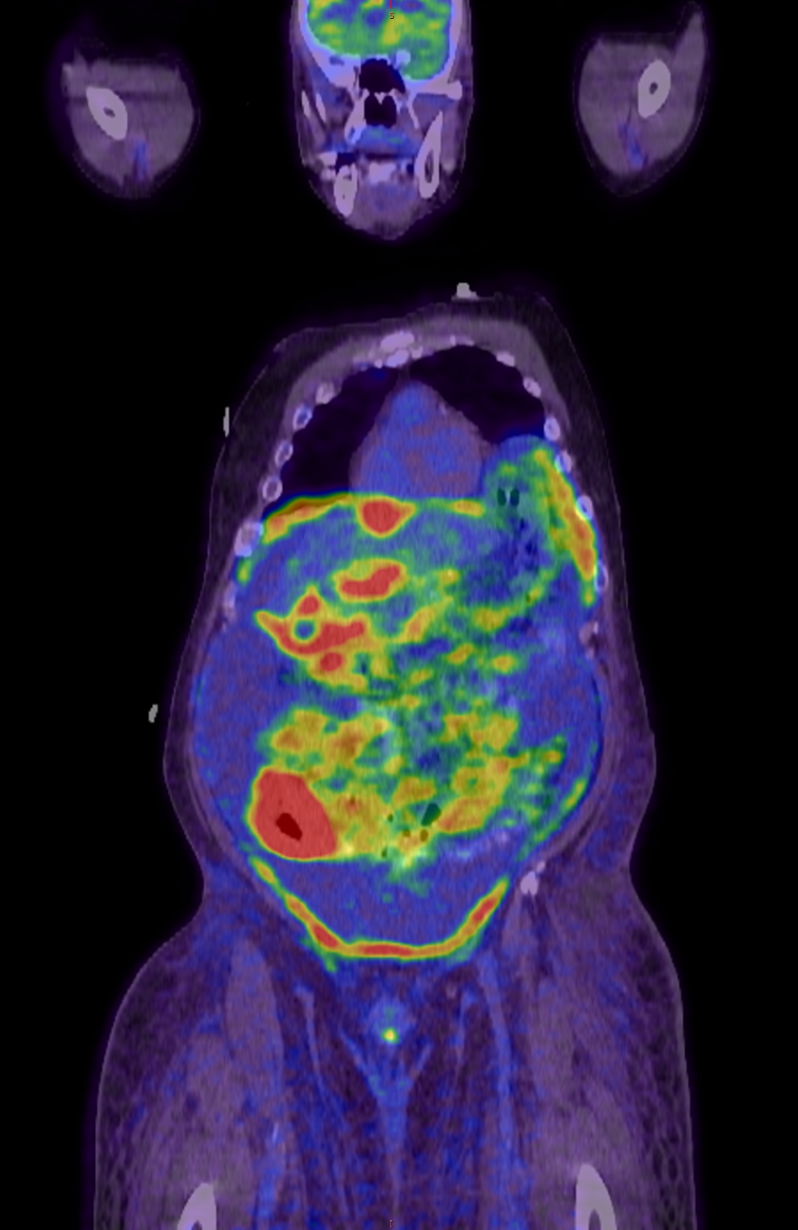Monday Poster Session
Category: Colon
P2584 - High Grade B-Cell Lymphoma of Colon Primary, a Rare Entity
- HB
Hussein Bazzy, DO
Corewell Health
Farmington Hills, MI
Presenting Author(s)
Corewell Health, Farmington Hills, MI
Introduction: Non-Hodgkin lymphoma is a neoplasm of lymphoid origin with a minority of patients initially presenting with an extranodal manifestation, such as the gastrointestinal tract. Furthermore, involvement of the large intestine carries the lowest incidence rate at 0.2%1. We present a case of high-grade B cell lymphoma of cecum primary.
Case Description/
Methods:
A 70-year-old African American male with a past medical history of Roux-en-Y gastric bypass who presented with poor appetite, abdominal distension, and reported 20 lbs. unintentional weight loss. On physical exam, abdomen was distended with mild, diffuse tenderness to palpation. Labs were notable for AST 157, ALT 106. Computed tomography of the abdomen and pelvis showed hepatocellular disease with subtle nodular liver contour with additional low attenuating lesions throughout the liver. He tested positive for Hepatitis B surface antigen with a viral load greater than 10^9 U/mL. Prior to this presentation, the patient had not been diagnosed with cirrhosis and denied regular alcohol consumption or unprotected sexual encounters.
In the setting of numerous liver lesions, endoscopic evaluation was performed, with colonoscopy being notable for an ulcerated and friable cecal mass near the appendiceal orifice (Figure). Cecal biopsies were significant for aggressive/high-grade B cell lymphoma, germinal center type, by Hans algorithm. The lymphoma cells were positive for CD45, CD20, CD10, BCL 6, and MYC and Ki-67 of 100%.
The patient was started on dose-adjusted rituximab, etoposide, prednisone, vincristine, cyclophosphamide, and doxorubicin (DA-R-EPOCH) for management of aggressive B cell lymphoma with concern for possible Burkitt’s versus double hit lymphoma in the setting of Ki-67 of 100%. He was initiated on tenofovir for management of chronic hepatitis B, transitioned to entecavir shortly after due to renal dysfunction.
Discussion: This patient's presentation of lymphoma of colonic primary highlights a rare subset of gastrointestinal malignancies. His concurrent diagnosis of chronic, untreated hepatitis B infection may have contributed to this diagnosis, as HBV has previously been implicated as an etiologic risk factor for NHL2. Whether or not treatment of chronic hepatitis B plays a role in reducing the implied risk of NHL in this patient population is worth evaluating in future studies. Endoscopic evaluation should be considered in the setting of metastatic lesions found to be NHL without an identified primary.

Figure: Colonoscopy - Ulcerated, friable cecal mass

Figure: Masslike thickening of the cecum with abnormal FDG uptake, correlating with biopsy-proven lymphoma.
Disclosures:
Hussein Bazzy indicated no relevant financial relationships.
Saakshi Joshi indicated no relevant financial relationships.
Jolian Kathawa indicated no relevant financial relationships.
Hussein Bazzy, DO, Saakshi Joshi, MD, Jolian Kathawa, DO. P2584 - High Grade B-Cell Lymphoma of Colon Primary, a Rare Entity, ACG 2025 Annual Scientific Meeting Abstracts. Phoenix, AZ: American College of Gastroenterology.
